News
Pachystyla bicolor released at Mt Camizard
La Vanille Nature Park along with the Mauritian National Parks and Conservation Service and the Mohamed bin Zayed Species Conservation Fund, continues our captive breeding program for the highly endangered Mauritian endemic snail Pachystyla bicolor.
Today 200 captive bred snails were selected from the breeding enclosure at La Vanille for release in the native forest at Mt Camizard where the parental stock originated.
Two individuals amongst the captive bred snails have a very rare genetic variant that results in the snails lacking pigment in their shell which thus appear uniform pale yellow.
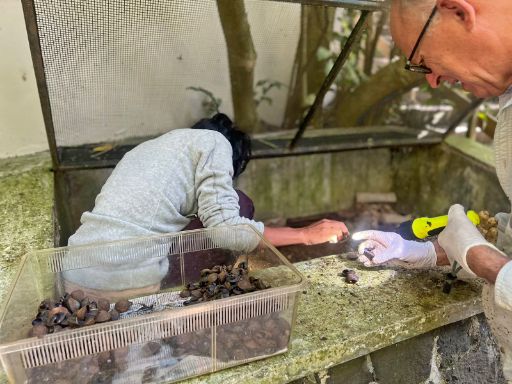
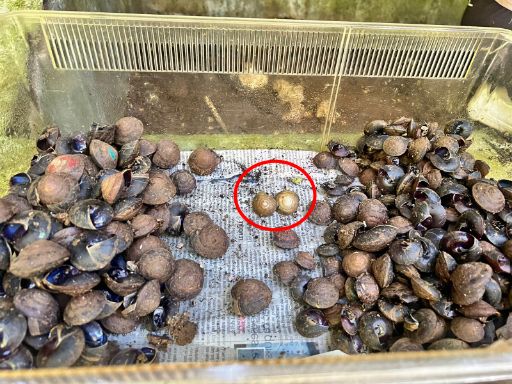
Collaboration with the ministry of Agro-industry and food security & Ebony Forest Ltd
A Historic Day
Our sister organization Ebony Forest has been restoring Mauritian native forests for over 15 years. Recently we were very pleased to have signed a Memorandum of Understanding between Ebony Forest and the Ministry of Agro-Industry and Food Security for a long-term collaboration to reintroduce endemic birds to Ebony Forest and Vallée de L’Est, another conservation site managed by our conservation team. We look forward to working with the Ministry and especially the National Parks & Conservation Service in contributing to saving more endemic species from extinction.
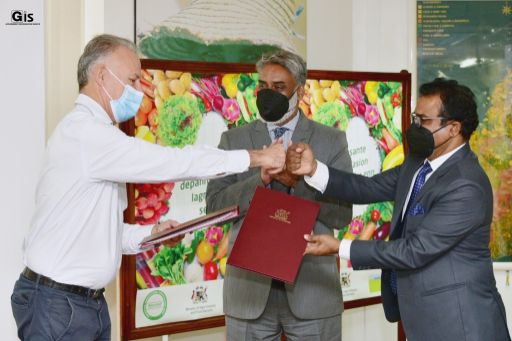
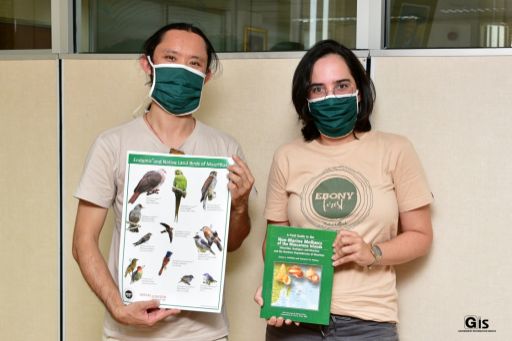
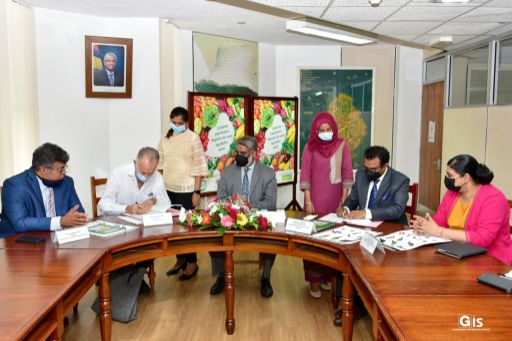
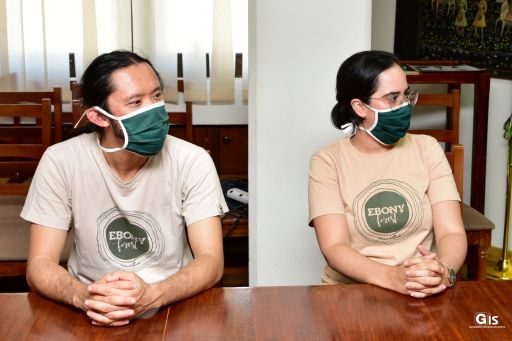
Invest in our Planet: Ebony Forest Team plants 500 endemic trees at Montagne Longue
Invest in our Planet is this year’s theme for Earth Day celebrated on the 22nd April 2022. The message this year is to accelerate solutions to fight against our greatest threat, climate change, and to unite everyone to take action for the sake of our health, families and livelihoods. A one for all and all for one approach from businesses, governments and citizens is needed. Everyone is accounted and everyone is accountable. Time is limited and we must act now, together and every day.
Ebony Forest has been investing in our planet since 2006 in their mission to save threatened species and ecosystems from extinction. The organisation currently manages three forest restoration projects. One in Chamarel (Ebony Forest Reserve Chamarel), Vallée De L’Est in the South East and Montagne Longue. A major component of the work done at each site is the control of invasive alien plants that are choking the endemic plants. With less than 4.5% of native forest remaining and over half of Mauritian plants being in danger of extinction, rapid and extensive action is needed. The three forests represent different climatic zones and thus contain different species. Montagne Longue is a dry forest, Vallée De L’Est a super humid forest, whereas the forest at Chamarel is humid forest.
The 20 hectare site at Montagne Longue is the latest project of Ebony Forest. The site harbours one of the last most nearly intact northern dry forests that once occurred throughout the north of the island and is home to rare species such as Bois de poupart and Bois de fer. Fondation Franklinia, Bioculture Ltd and Ebony Forest are co-financing the restoration of 10 hectares of forest over the next 2 years and the project is in collaboration with the Forestry Services. On Thursday 21st April, the team celebrated their first planting session, planting 500 endemic plants, of 23 species, on the lower slopes of the mountain. Owen Griffiths, who participated in the planting, said “Restoring the forest is the first step to saving local biodiversity. While it is a long-term and costly project, it is undoubtedly one of the best investments that one can make. The benefits of our actions today will be felt for generations to come. Once restored, there is the potential to reintroduce missing birds and reptiles.”
The stages of restoration of the other two sites managed by Ebony Forest are more advanced. At Ebony Forest 25 of the 50 hectares are under restoration management and over 151,000 plants have been planted, whereas at Vallée De L’Est, 8 hectares have been weeded and over 51, 000 endemic trees planted. In addition to restoring the forest, Ebony Forest runs conservation training courses at Chamarel, offers people the opportunity to volunteer in conservation activities, guided tours of the forest and education projects for schools.
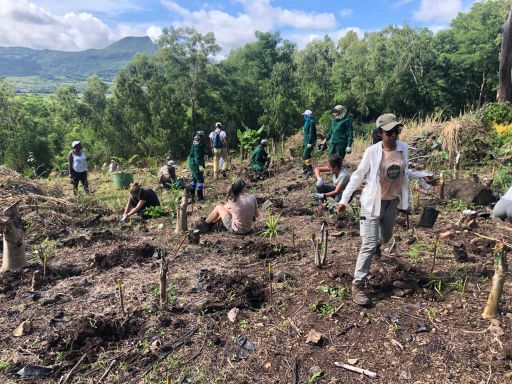
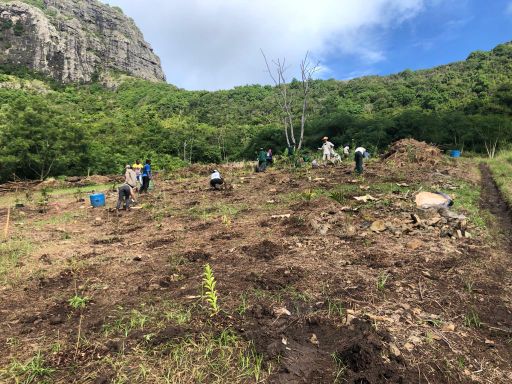
Environment Day at Rivière des anguilles govt School
It is with great pleasure that we collaborated with the Primary School of Rivière des Anguilles to celebrate and educate students about Environment Day. This half-day was full of emotions and sharing with the students, their teachers and their leaders. A big thanks to Margaret Couronne, Ms. Ghurreah, Ms. Muthy and the schoolmaster, Mr. Jaggessur.
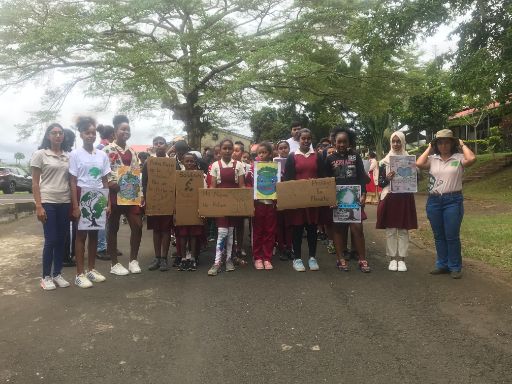
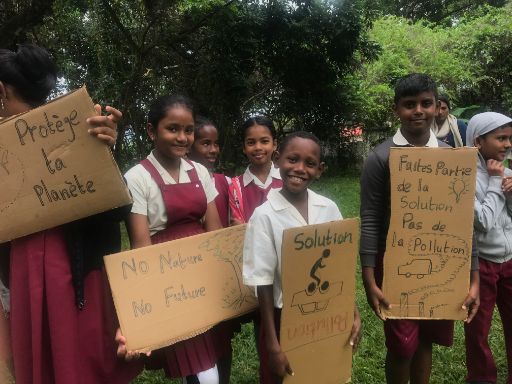
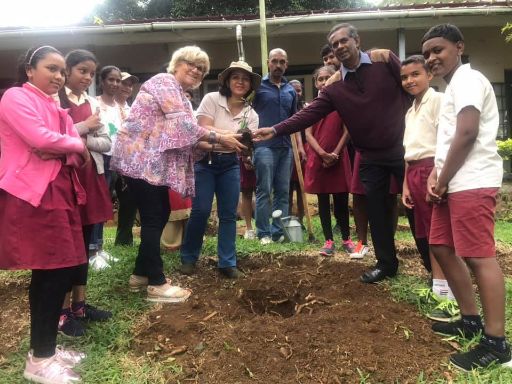
Back to Mauritius after 150 years
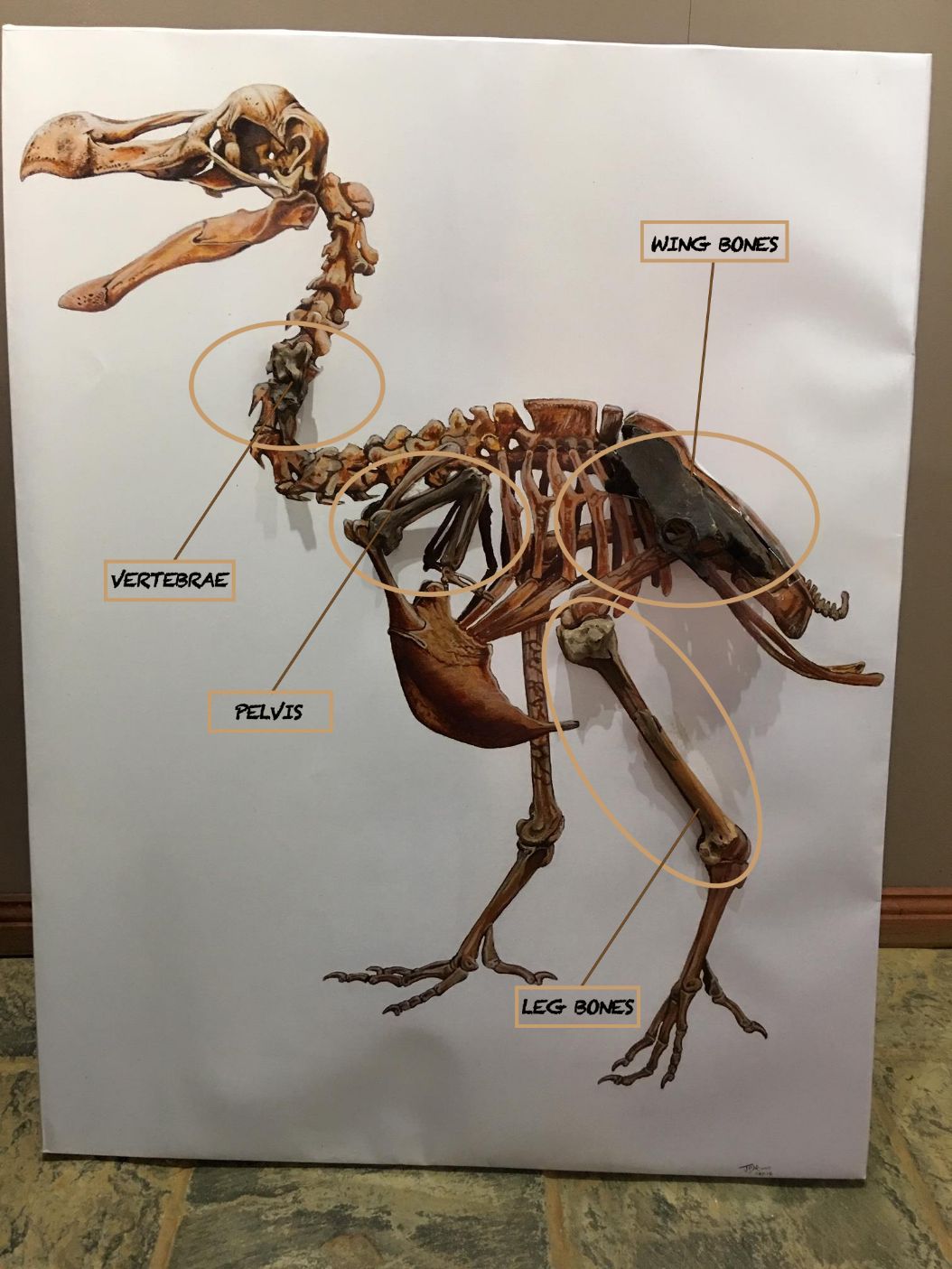
Life-size illustration of a Dodo Raphus cucullatus skeleton
This reconstruction is based on the most complete dodo skeleton in the world and held in the Natural History Museum, Port Louis. It was collected by Etienne Thirioux around 1894 in a valley beneath Le Pouce Mountain. Thirioux was a barber and worked in a salon in the capital, Port Louis, and spent his free time searching for fossils in the valleys surrounding the capital. He was a keen naturalist and wanted his collection scientifically studied, so most of his specimens were sent to Paris and Cambridge England, where they reside today. Thirioux offered his entire collection to Alfred Newton, professor at Cambridge, but due to the extremely mean offer of £20 made by Newton, Thirioux sold it to the Natural History Museum, Port Louis for £100. However, he was unhappy about the treatment of his specimens, so a few years later bought back most of the fossil material out of his own pocket and sent it free of charge to Cambridge. Alfred Newton did honour Thirioux's discovery in an article, but misspelt his name, Thirion. Thirioux settled on Rodrigues around 1913 to be with his son and died there in Port Mathurin on June 11, 1917.
Thirioux’s vast collection of Mauritian fossils including the dodo, still remain the most important record of the now extinct fauna of Mauritius.
Dodo bones
The genuine Dodo bones imbedded in this Dodo Skeleton painting are all from the Mare aux Songes fossil site and were exported and sold in the UK in the 1860s.
In 2018, as part of our efforts to protect Mauritian National Heritage, La Vanille acquired these skeletal elements in the UK (pelvis; vertebrae; wing and leg bones). With the approval of the Mauritian Authorities (National Heritage Fund), they have now returned to the motherland after an absence of almost 150 years.
Newspaper Articles
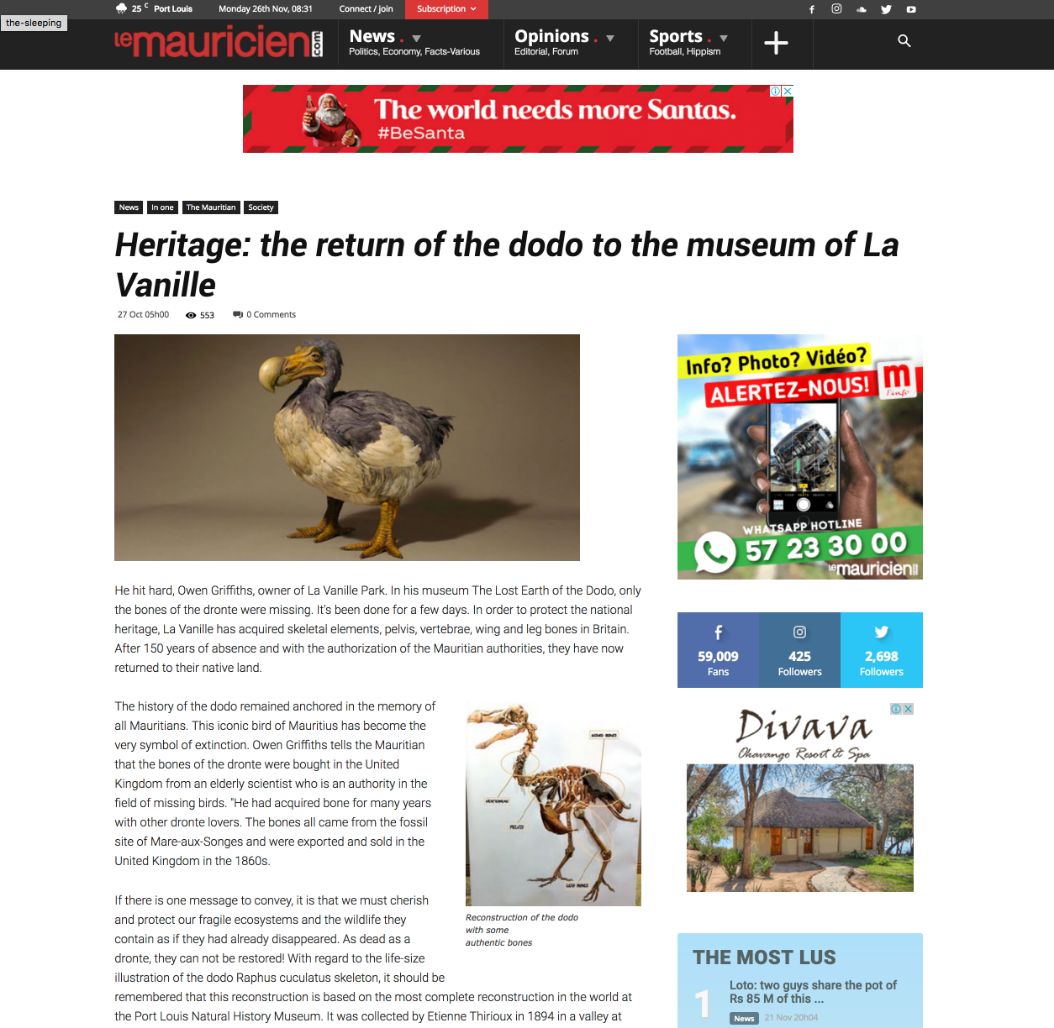
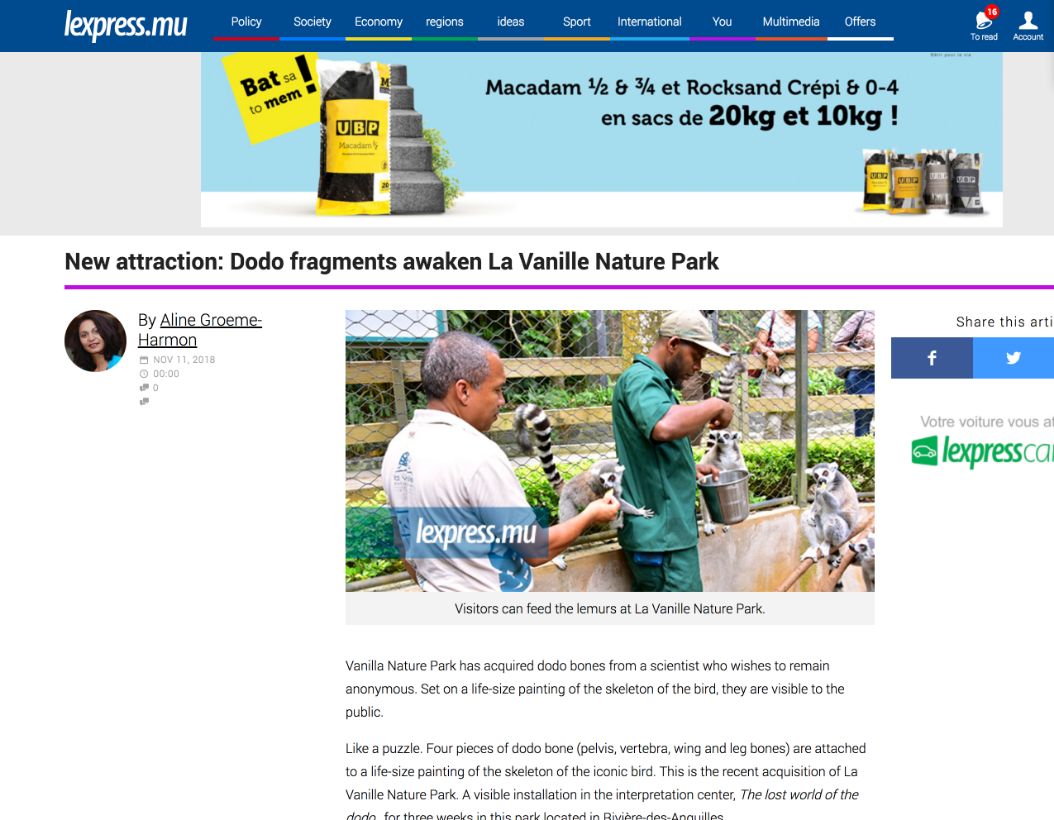
Read more on: https://www.lexpress.mu/article/342630/nouvelle-attraction-fragments-dodo-reveillent-vanille-nature-park
A 12,000-year-old swamp full of dodo bones has been found
By Katie Pavid
First published 12 September 2019
An ancient swamp full of fossils from extinct animals was discovered in Mauritius.
It was first found by scientists in 1832, when it was said to be so full of animal bones that you only had to dip your hands into the water to retrieve them.
The site near Mare la Chaux has now been re-examined by an international group of researchers, including Museum palaeontologist Dr Julian Hume. It was excavated for the first time in a collaboration between the National Heritage Foundation and the landowner.
The area has already yielded many bones belonging to extinct Mauritian animals. Incredibly, the team found a huge diversity of species represented in the fossil record. They also found bones at a density of around 600 per cubic metre, much higher than other known fossil sites on Mauritius...
CLICK HERE TO CONTINUE READING
